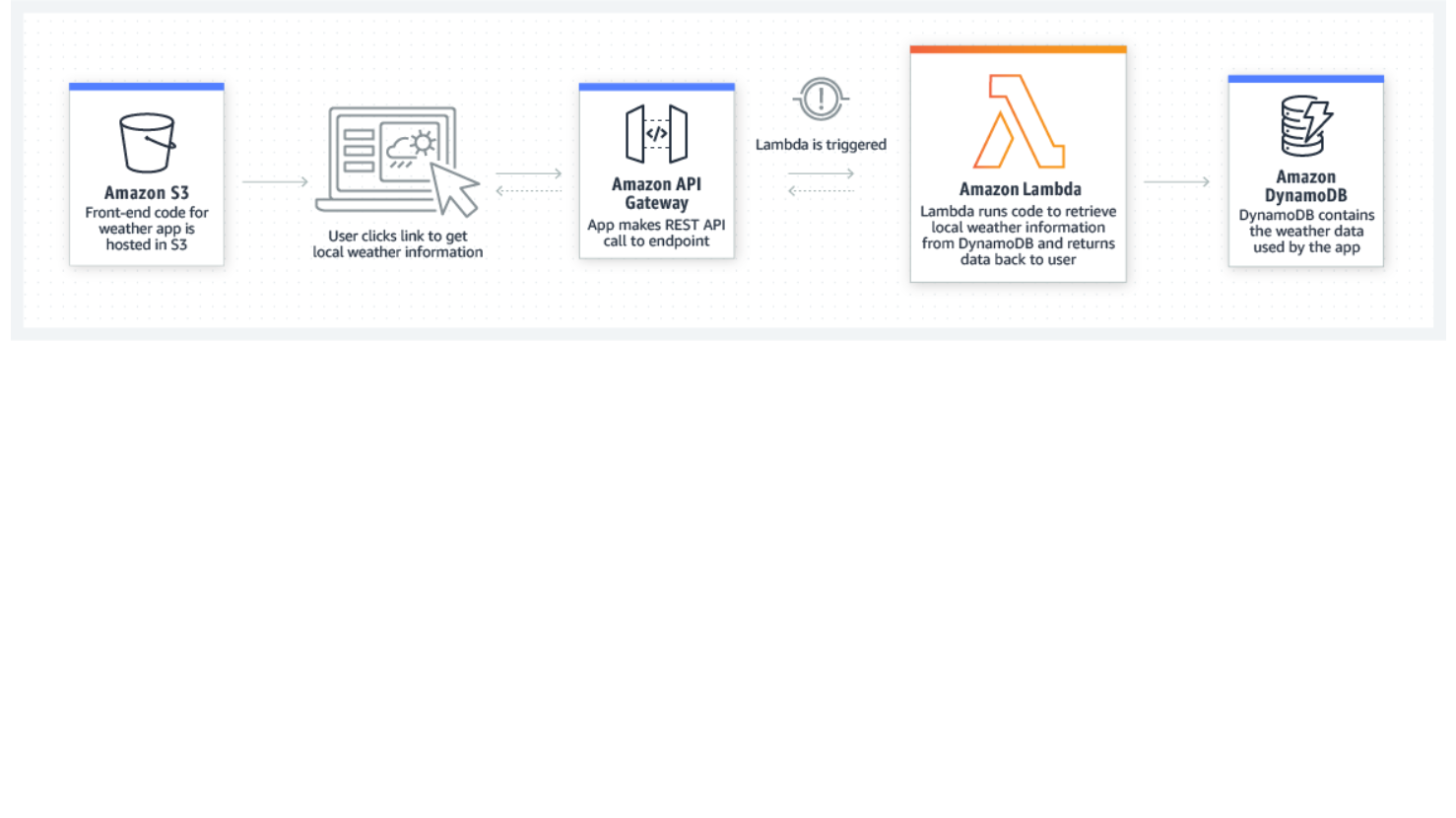Amazon Lambda
Run code without thinking about servers. Pay only for the compute time you consume.
Features
Run code without provisioning or managing infrastructure. Simply write and upload code as a .zip file or container image.
Automatically respond to code execution requests at any scale, from a dozen events per day to hundreds of thousands per second.
Save costs by paying only for the compute time you use—by the millisecond—instead of provisioning infrastructure upfront for peak capacity.
Optimize code execution time and performance with the right function memory size. Respond to high demand in double-digit milliseconds with Provisioned Concurrency.
Benefits
No Servers to Manage
Continuous Scaling
Subsecond Metering
Page topics
How It Works
Open allYou can use Amazon S3 to trigger Amazon Lambda to process data immediately after an upload. You can also connect to an existing Amazon EFS file system directly, which enables massively parallel shared access for large scale file processing. For example, you can use Lambda to thumbnail images, transcode videos, index files, process logs, validate content, and aggregate and filter data in real-time.
Reference Architecture: Sample Code
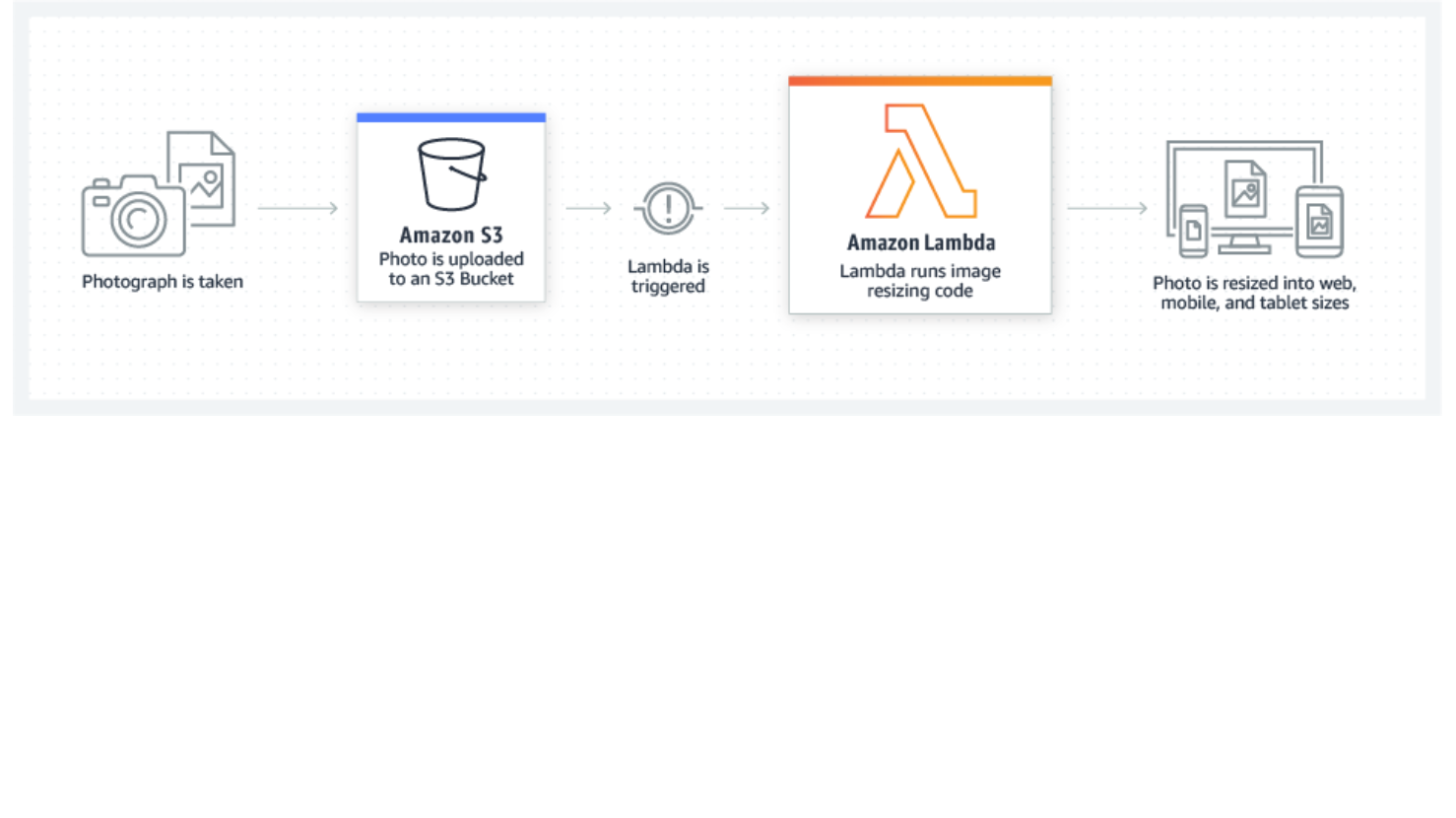
You can use Amazon Lambda and Amazon Kinesis to process real-time streaming data for application activity tracking, transaction order processing, click stream analysis, data cleansing, metrics generation, log filtering, indexing, social media analysis, and IoT device data telemetry and metering.
Reference Architecture: Sample code
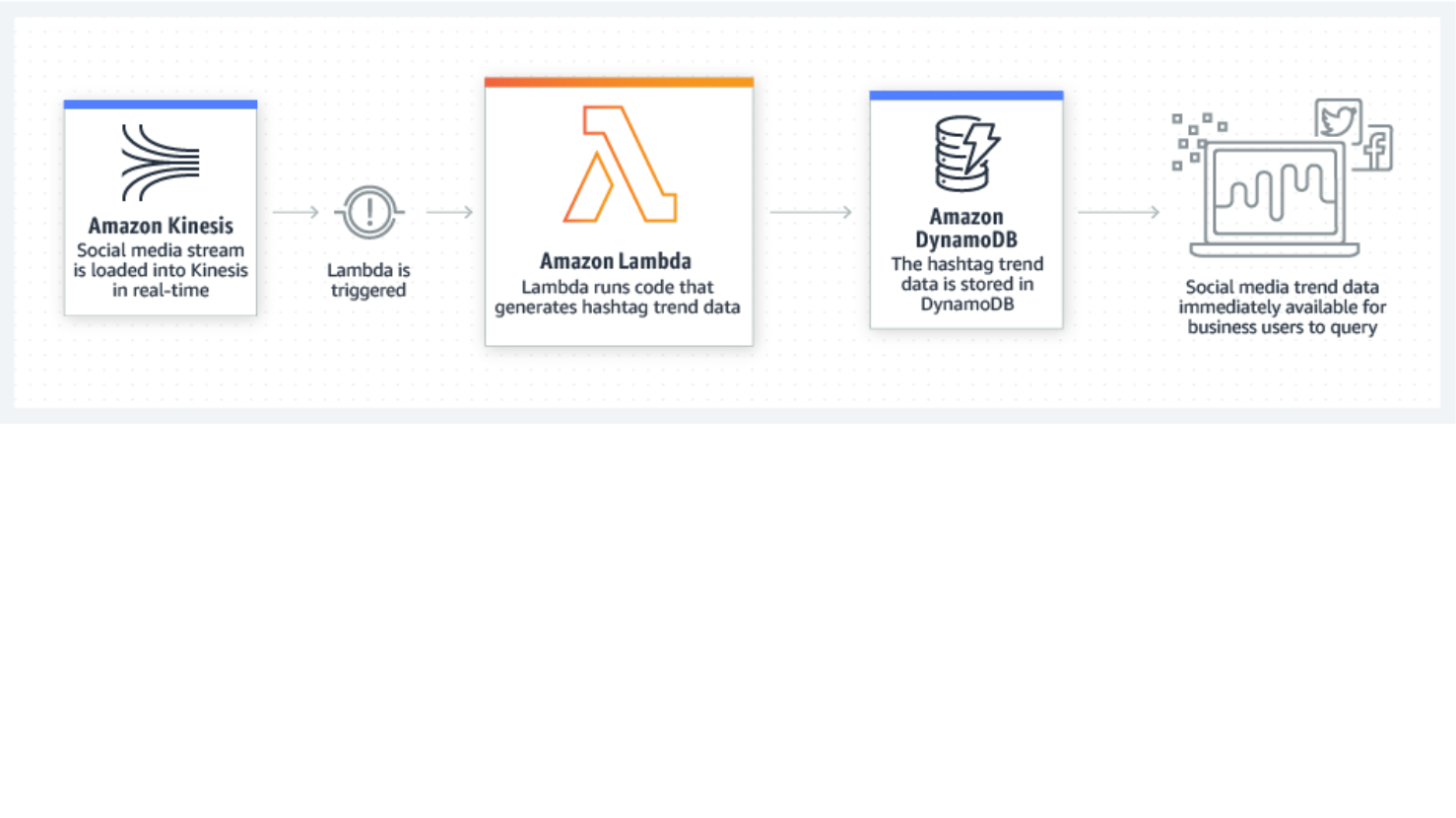
You can build backends using Amazon Lambda and Amazon Kinesis for Internet of Things (IoT) device data telemetry and analysis.
Reference Architecture: Sample code
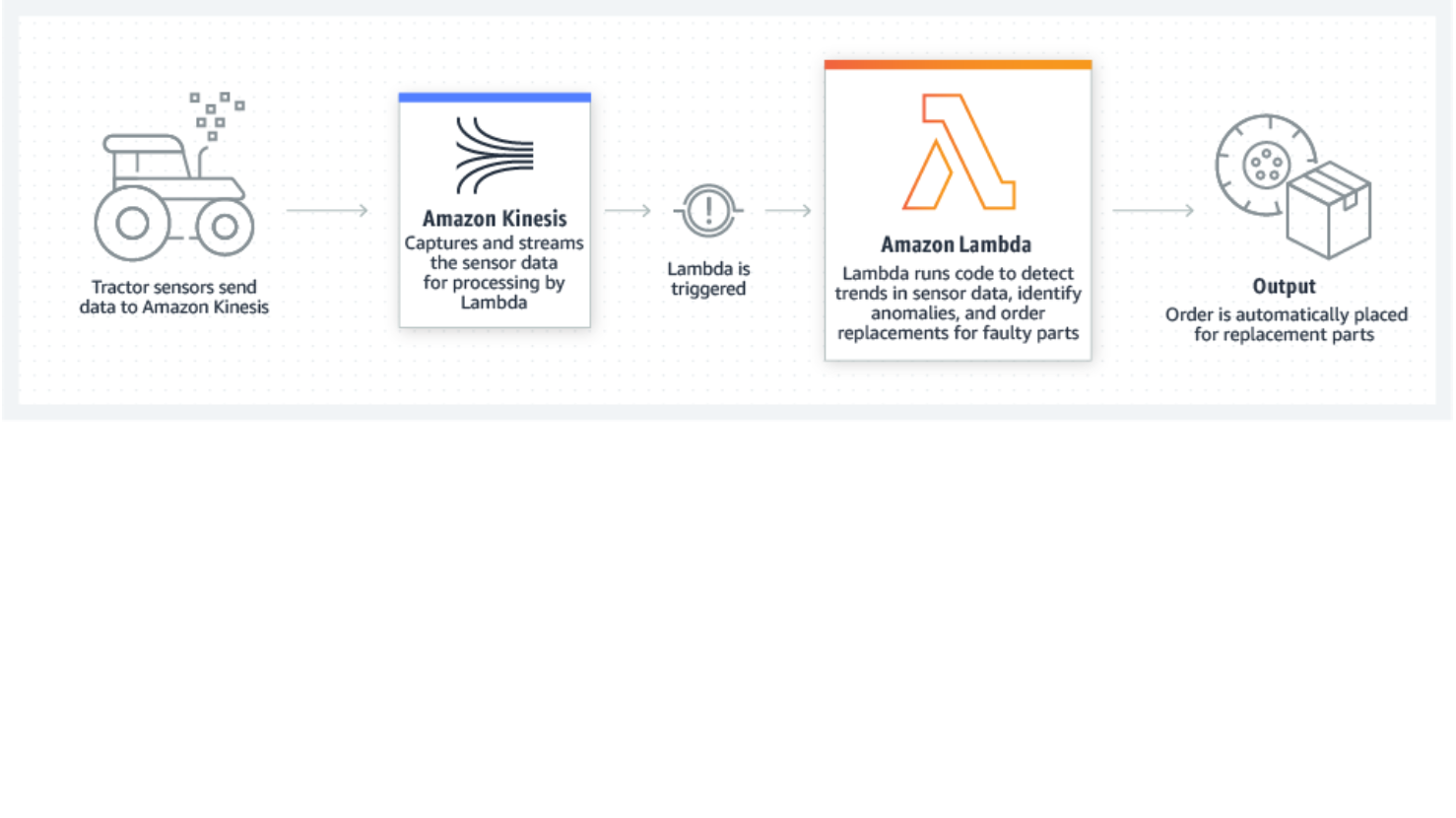
You can build backends using Amazon Lambda and Amazon API Gateway to authenticate and process API requests. Lambda makes it easy to create rich, personalized app experiences.
Reference Architecture: Sample code
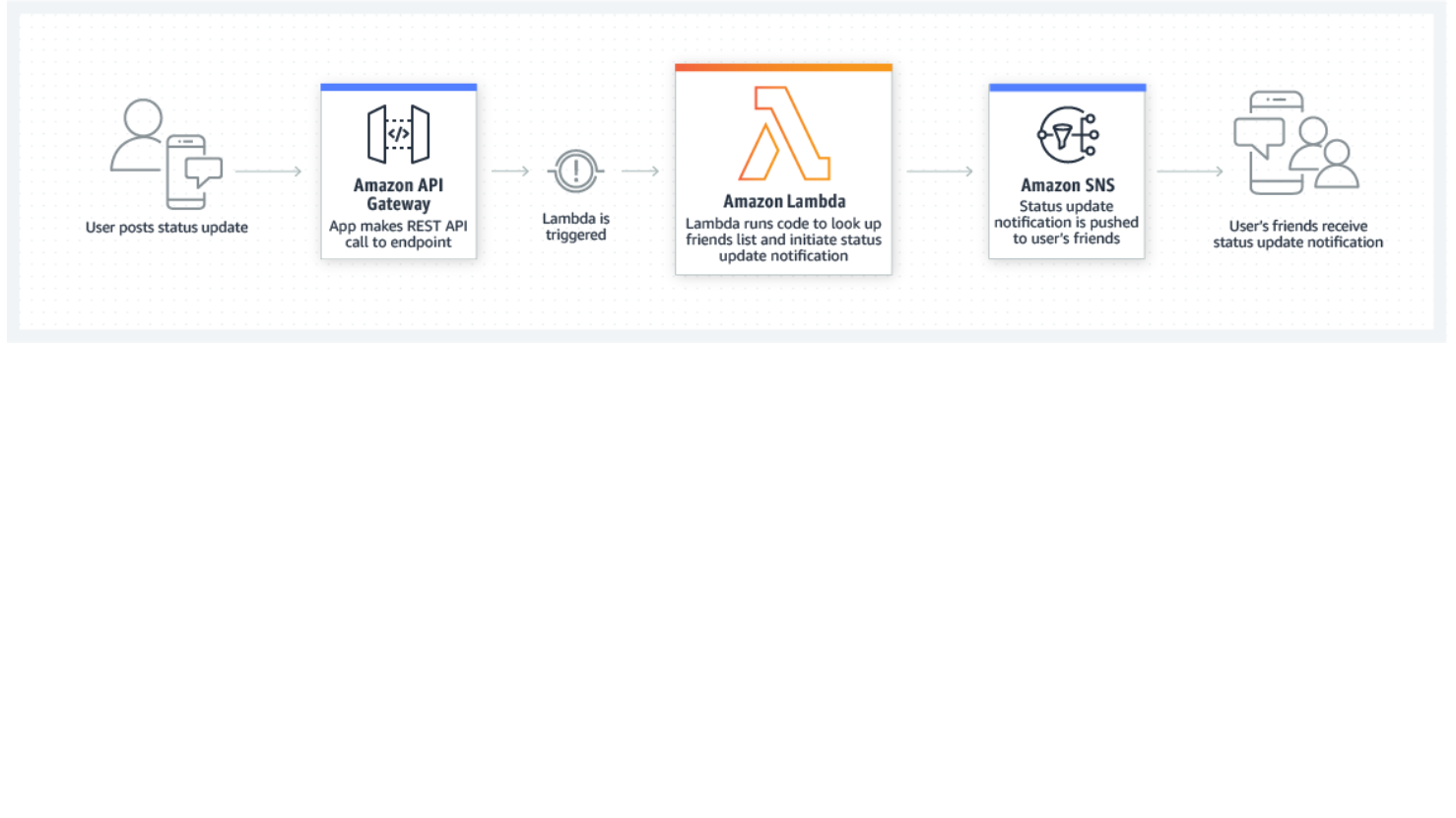
By combining Amazon Lambda with other Amazon Web Services services, developers can build powerful web applications that automatically scale up and down and run in a highly available configuration across multiple data centers – with zero administrative effort required for scalability, back-ups or multi-data center redundancy.
Reference Architecture: Sample code
